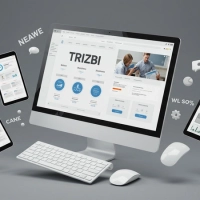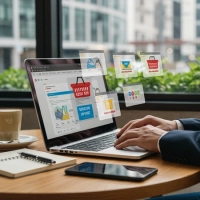
What is B2B E-commerce?
If there is another e-commerce model that is as popular as the b2c e-commerce from producer to consumer, it is the b2b e-commerce model. In this e-commerce model, which is called business to business (company to company), sales are not made to the end consumer, but sales are made between the producer and sales channels. This e-commerce model, which is also widely used in our country, also allows for the ongoing trade between companies to be carried out more practically, quickly and smoothly.
What are the requirements for setting up a B2B e-commerce site?
Perhaps the most basic thing you need is the time and effort you will spend for this new business you want to establish. As in every business line, you need to spend a lot of these two for b2b e-commerce. You should crawl, walk and run in order with the right planning before the establishment, the establishment phase and the promotion process afterwards...
Where Should Those Who Want to Set Up an Online Sales Site Start?
You should start by getting a domain name that is suitable for your product and brand. The right name for B2B e-commerce is very important in terms of brand recognition. However, you should do a complete research on e-commerce software, which is actually the backbone of the business, and choose a b2b e-commerce software that can significantly reduce the responsibilities of the management with the services it offers. When you get these two, you will actually have the infrastructure required for online sales. After that, the necessary precautions are taken for the entry of products into the system, the healthy execution of supply and logistics operations, and sales... It is useful to make a short warning. If you are going to trade in the digital world, you need to be concerned with the security of your sales and payment infrastructure. An insecure infrastructure can cause customer and money loss, and at the same time, leave you face to face with unpleasant legal problems.
- Tiered Pricing and Customer-Specific Catalogs: The ability to offer special prices and product listings to different customer groups.
- Bulk Ordering and Fast Reordering Options: Easy ordering to suit the needs of B2B customers.
- ERP/CRM Integration: The importance of seamless integration with business processes.
- Multiple Payment Options: Different payment methods such as credit card, bank transfer, check, credit account.
- Advanced Search and Filtering: Easy navigation through large product catalogs.
- Order and Stock Management: Instant stock tracking and order status updates.
What Do You Need to Know About Selling Abroad?

You should determine your target market with analysis and shape your organization accordingly. Again, researching the competitors in the current country, learning the approach of consumers to the equivalent products of your products, various analyses regarding the price situation and the future of the market will also be useful. While some countries do not accept certain products due to legal regulations, some countries may have various incentives for that product. You should also plan issues such as payment and logistics correctly and analyze correctly which logistics company you will use when shipping to that country. Since payment systems have developed considerably today, you can easily receive payments via your b2b e-commerce site with a credit card.
- Payment Methods: Credit card, bank transfer, payment by invoice (payment terms), purchase orders.
- Shipping and Logistics: Shipping complexity for bulk orders, different carrier options, delivery times.
- Return and Warranty Policies: Special return processes for B2B.
How to Sell Online E-Commerce Without Stock?
Normally, when it comes to e-commerce, a process is expected in which the products sold are stocked in the seller's warehouse and the sold product is sent from the warehouse to the buyer. Today, e-commerce has evolved into a different direction. So much so that e-commerce companies no longer keep their products in their warehouses, but in the manufacturer's warehouse. To briefly explain the process; when a product offered for sale on an e-commerce site is sold, the buyer's information is notified to the manufacturer and the product is shipped. The e-commerce company only deposits the price of the product into the manufacturer's account. In this way, it avoids costs such as capital and storage costs. However, there may be negative consequences. Problems such as a product you sell not being in the manufacturer's stocks at the moment, problems with production, the manufacturer not shipping the product on time and logistics problems may be encountered.
With the Trizbi b2b e-commerce solution, a structure that meets all the needs of companies that want to do b2b e-commerce is offered. While it can be used as a complete solution with the services it contains, it also offers a structure that even people who do not know this business can easily adapt to and sell in the b2b e-commerce model.























